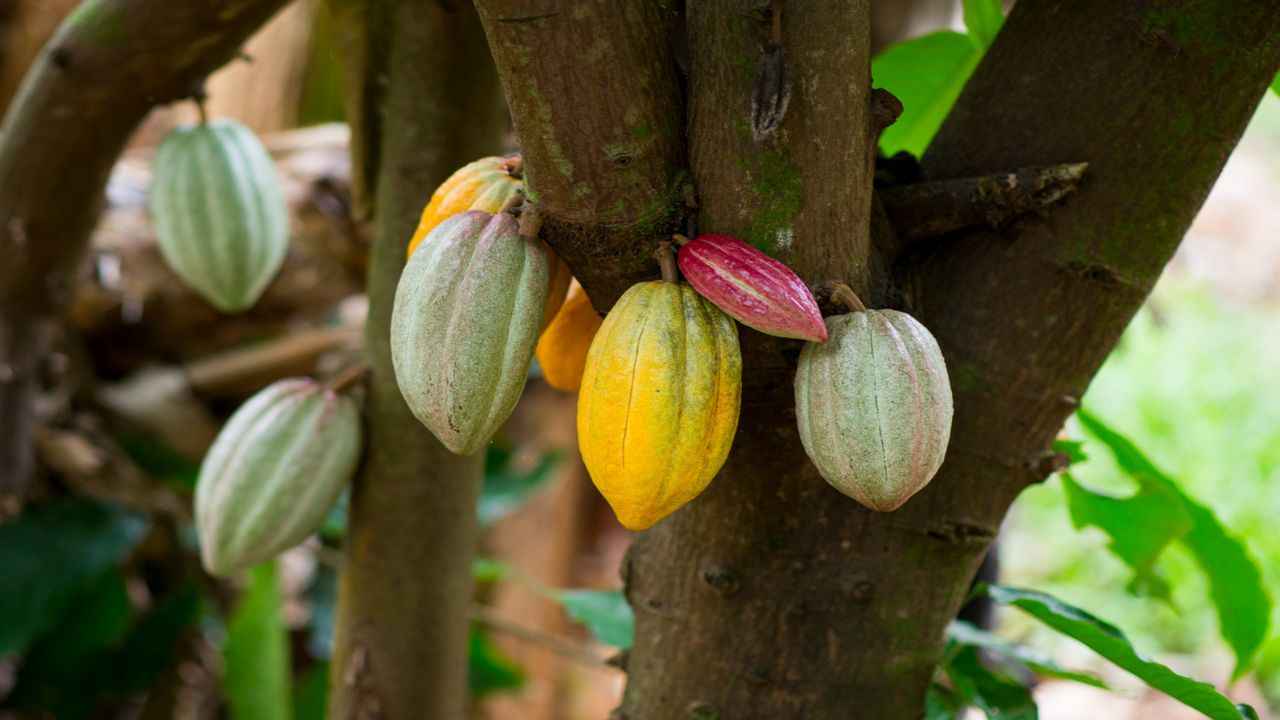There is nothing better than sipping a cup of freshly brewed Kona coffee or having the luxury to chow down on some pineapple and macadamia nuts any time of the day.
Only in Hawaii can one easily and readily enjoy all of these highly valued products within a drop of a hat.
And now you can add one more to the list. Chocolate. Or rather, cacao.
What You Need To Know
- The Hawaiian chocolate industry continues to grow more popular
- It is the only state in the country that can commercially cultivate cacao
- Weather and climate influence how it is grown and how it will taste
The Hawaiian Islands are known to produce some of the world's most desirable products, but recent years have seen considerable growth in the chocolate-making industry, from bean to bar.
Unlike coffee beans, pineapples and macadamia nuts, we all know that chocolate bars don't grow on trees. It would be great if they did, but that's not the way it works.
Chocolate is manmade. One of its key ingredients, however, is not. That is cacao.
Responsible for giving chocolate its famed taste and rich aroma, the cacao crop thrives best in warm, tropical climates. Specifically, it only grows within a restrictive band, known as the Cocoa or Cacao Belt, that spans 20 degrees latitude north and south of the equator.
The Hawaiian Islands happen to just straddle the northern edge of this belt, making it a suitable location to grow cacao.
Although people have claimed that cacao could grow in South Florida, Hawaii is the only state that has grown it commercially, given that it is in closer proximity to the cacao belt.
Hawaii is also less susceptible to cold outbreaks than southern Florida, and thus, the plant has a much better chance of surviving and thriving.
While not a native crop, since the mid-1800s, cacao has sparsely grown in the state thanks to researchers and independent farmers.
Over the last century, many have made multiple attempts to grow the crop commercially. However, given the length of time it takes to grow and the cost-effectiveness of cultivating it, producing cacao as an essential commodity on its own was a failure.
It was not until the 1990s that Hawaii began to grow it commercially –and not just as a commodity.
Most Hawaiian farmers looking to cash in on the crop decided to take it a step further. They would make their own Hawaiian chocolate.
Since then, the crop has become increasingly more popular among farmers and other agricultural companies looking to get in on the Hawaiian chocolate craze.
Like the coffee crop, cacao thrives in warm, humid conditions. Hence, many coffee farmers in the state have started to grow cacao in recent years.
Consistency is key for cacao, especially when it comes down to temperatures, humidity and precipitation.
It can tolerate slightly warmer temperatures than coffee so long as there is not a decrease in soil moisture and humidity. However, the crop would flourish much better in an environment seeing at least a little rain every day as opposed to having a heavy rain event followed by a stretch of dry days.
The cacao tree prefers shelter from high winds and favors growing in the shade of other trees and vegetation, especially during the first couple of years of life. And, of course, growing in the nutrient-rich volcanic soil of the Hawaii Islands is also an added benefit.
Small fluctuations in the weather pattern won’t necessarily destroy the plant’s development, but it could certainly impact its flavor. So much so that two plants bearing identical genetics planted on different islands, or even different areas on the same island, could produce fruit that tastes vastly different.
According to a researcher at the University of the West Indies’ Cocoa Research Centre, cacao trees planted in drier, warmer areas tend to become more “stressed out” and yield fruit with lower fat content, or “cocoa butter”. Even though these beans have a higher antioxidant content, they typically will have a more astringent or bitter taste.
On the other hand, adequate rainfall and moisture levels in the soil have led to beans with higher fat content.
Unfortunately, growing cacao in Hawaii is expensive.
Between agriculture needs and the tourist industry, the demand for land is high, so purchasing property that is available is often very expensive. Adding in the cost of laborers, irrigation and other farming expenses will only further drive up the price tag.
Another disadvantage is where to plant.
Given the many microclimates, farmers need to think things out carefully before planting cacao in Hawaii. Growers must keep in mind the trade winds, especially during the winter months.
These stronger winds could prove too harsh of an environment for the crop to grow. Without proper protection, the plants may produce only a limited amount of fruit and could be more susceptible to disease.
Despite the disadvantages, growing cacao on the Hawaiian Islands has some benefits. For one, being isolated on an island prevents the spread of disease.
Additionally, many cacao farmers have even taken the industry one step further.
They offer tours and workshops where visitors can learn more about the crop and get to see the entire bean-to-bar process. This has led to a big boom in ecotourism in recent years.
In the end, many local farmers do not let the expenses intimidate them.
They not only continue to grow cacao, but are also passionate about making their own chocolate out of their surplus. And those who offer tours enjoy sharing that passion with vacationers near and far.
With limited crop yields and high demand, most Hawaiian chocolate-makers do have to supplement their "craft chocolate" with additional cacao imported from other countries.
However, there is hope that with the industry expanding, one day there will be enough cacao produced in order to enjoy a pure Hawaiian chocolate bar.



